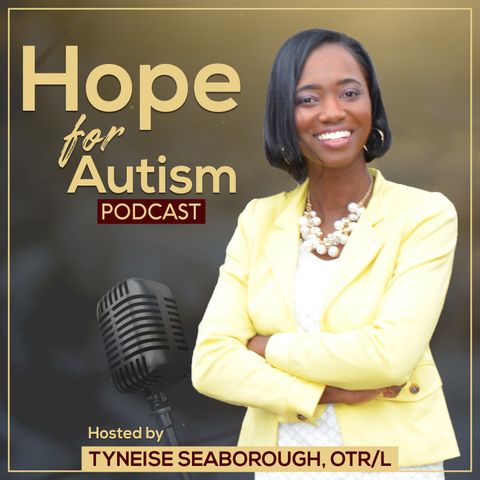Episode 5: Could a Sensory Processing Disorder Affect Language and Communication Skills? Is SI a link?

Sign up for free
Listen to this episode and many more. Enjoy the best podcasts on Spreaker!
Download and listen anywhere
Download your favorite episodes and enjoy them, wherever you are! Sign up or log in now to access offline listening.
Description
Sensory Processing, as defined by Dr. Lucy Jane Miller, is a term that refers to the way the nervous system receives sensory messages and turns them into responses. We are...
show moreIndividuals on the spectrum also have a Sensory processing disorder (SPD). Per Dr. Miller, SPD exists when signals don’t get organized into appropriate responses and a child’s daily routines and activities are disrupted as a result. For example, a child who touches a hot stove but doesn’t respond is a great concern! An individual who hears the humming of lights and it is very aversive to them.
So what do I mean by the term, “sensory integration”? According to occupational therapy for children, it is the process of the brain organizing and interpreting the sensory experiences.
For the past 14 years, I have witnessed first hand, stories of breakthrough and transformation that took place while on a swing, a trampoline, or a yoga ball. Children who uttered their first words while swinging….aahh.
So is there a link between Sensory integration and language skills?
According to Sarah Perkins, a speech therapist at the Koomar Center, a review of 16 articles published between 1981 and 2011 supports the view that speech-language difficulties frequently co-occur with sensory integration difficulties, and that SI treatment can support speech and language gains.
In conclusion, Sarah states in her write-up, “Our clinical experience has shown that not only does a child’s improvement in sensory integrative functions improve the course of his or her speech-language acquisition, but the child’s ability to respond adaptively in the areas of speech and language also positively affects his or her sensory integrative processes” (Windeck and Laurel, p. 1). Thus, SI treatment and speech and language treatment reinforce each other, resulting in positive gains for children with sensory integration challenges as well as speech and language difficulties.
To view the article in details, check out the writing here: http://www.otawatertown.com/wp-content/uploads/2015/12/SI_therapy_speech.pdf
Information
| Author | Tyneise Seaborough |
| Organization | Tyneise Seaborough |
| Website | - |
| Tags |
Copyright 2024 - Spreaker Inc. an iHeartMedia Company
